How to get around Kyoto by bus
Kyoto, Japan’s historic and cultural capital, is not a city blessed with an extensive metro system. Many parts of the city are accessible by subway, but many more simply aren’t. In addition to this, many of the sights that the average visitor would want to see are at far-flung corners of the city, which seemingly makes transport between them tricky.
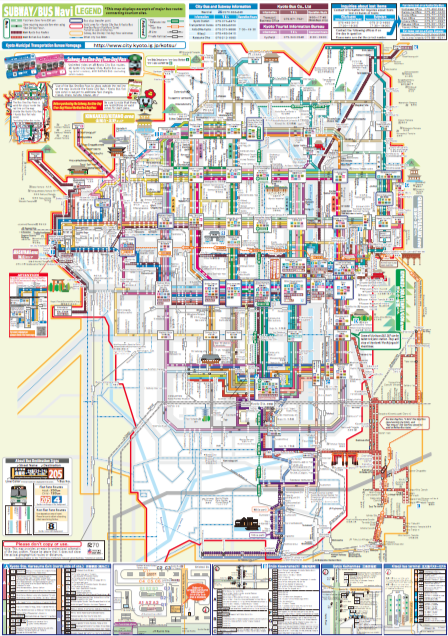
Kyoto’s bus and subway network map (Image: Kyoto.lg.jp)
Enter Kyoto’s insanely comprehensive bus system. I’ve never seen a bus system that is quite as comprehensive (if not complex) as this city’s. And yet, like everything in Japan, it just seems to work! Almost every part of the city is linked to another, and if you need to take more than one bus, there is usually just one connection required.
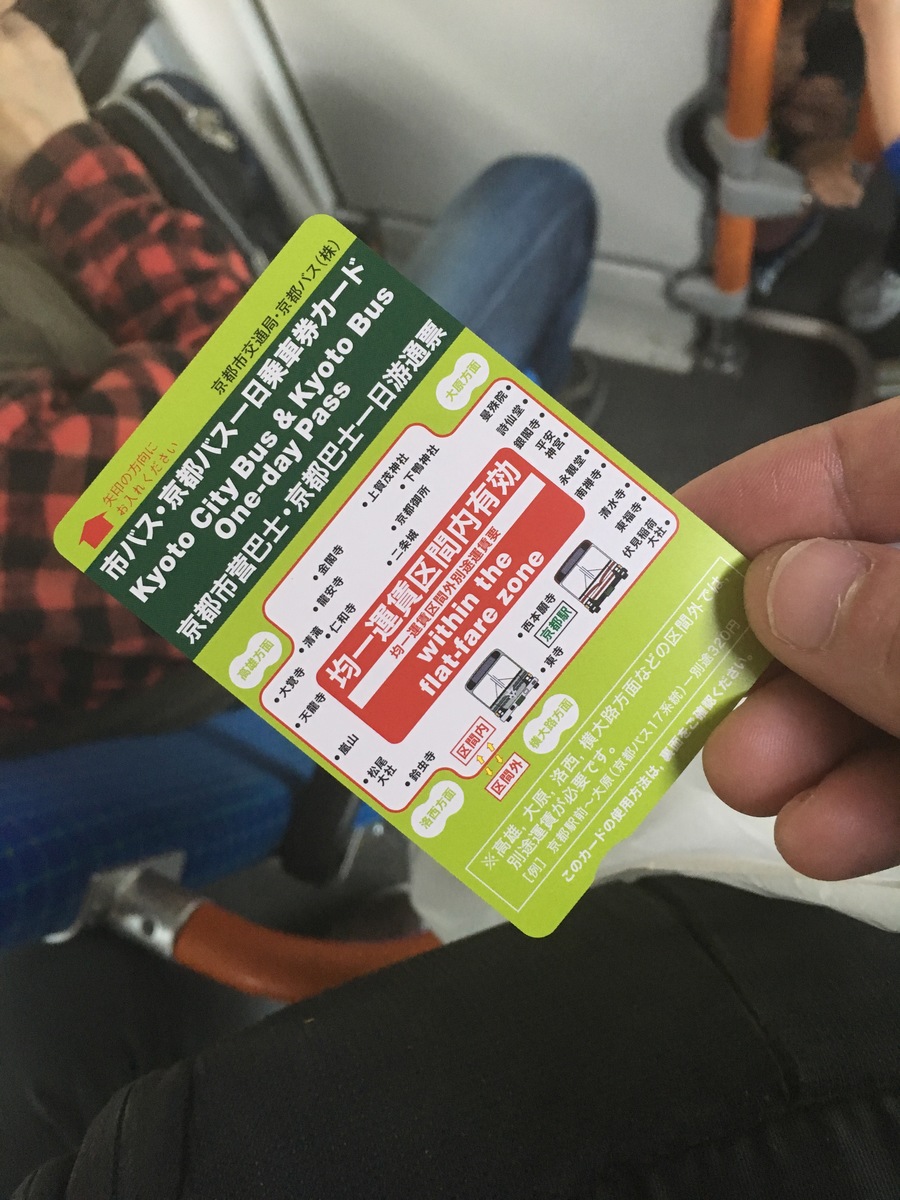
Kyoto one day bus pass
A one day bus pass allows unlimited travel within what is known as the “flat fare zone” for just 500 Yen (about US$5) for adults and 250 Yen for children – it’s insanely cheap! The ticket is initially sold from hotels and tourist information stands across the city with no set date. When you take your first bus for the day you are required to validate your ticket; it will then be stamped with the date of activation.
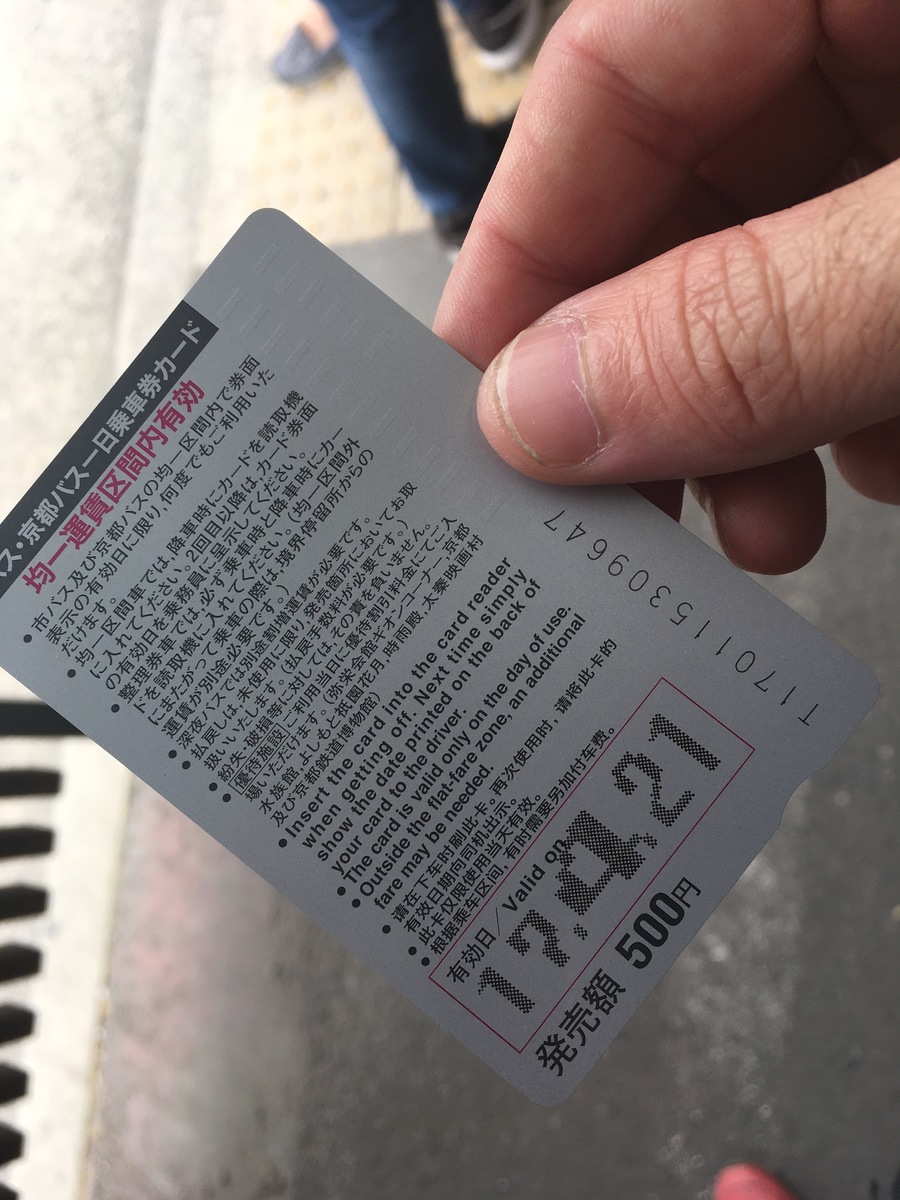
You can use as many buses within the Kyoto flat fare zone for the day of the ticket’s activation, however it’s important to note that the ticket does not last 24 hours – the last bus you could board would be at 11:59pm on the evening of the day of validation.
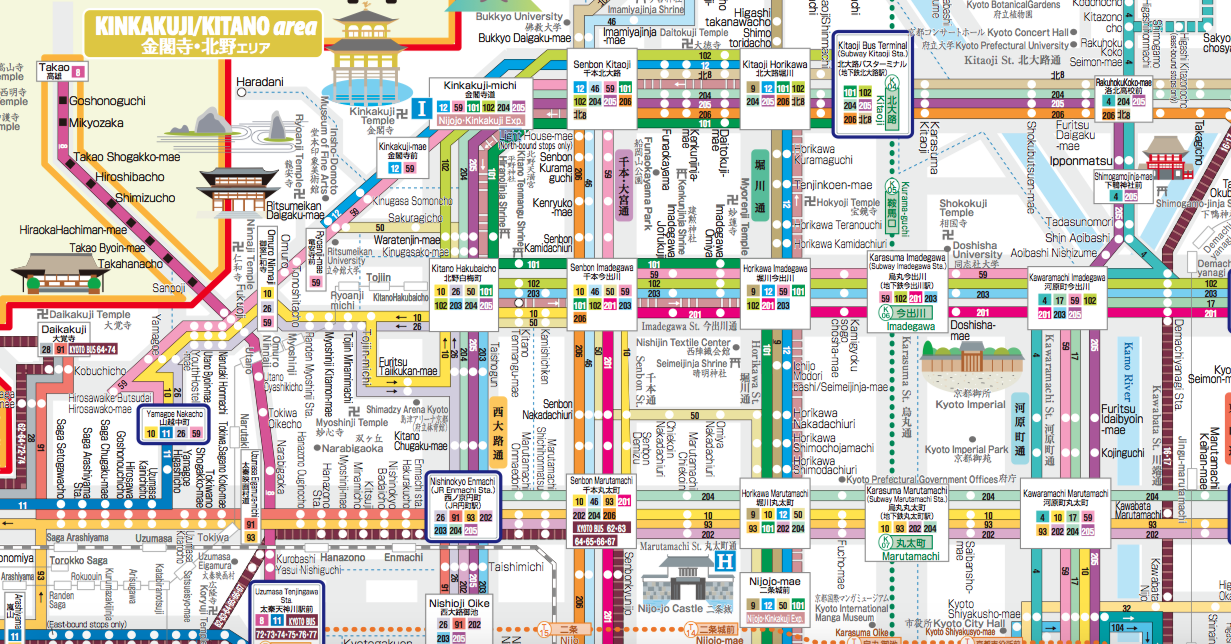
Kyoto’s bus and subway network map (Image: Kyoto.lg.jp)
Bus stations in Kyoto display details of the bus routes that operate from there. The system looks insanely complex, but if you follow the basic colour coding and numbers of the bus routes, it’s not too bad. Many of the routes converge on Kyoto Railway Station, which acts as a sort of central hub for the city.
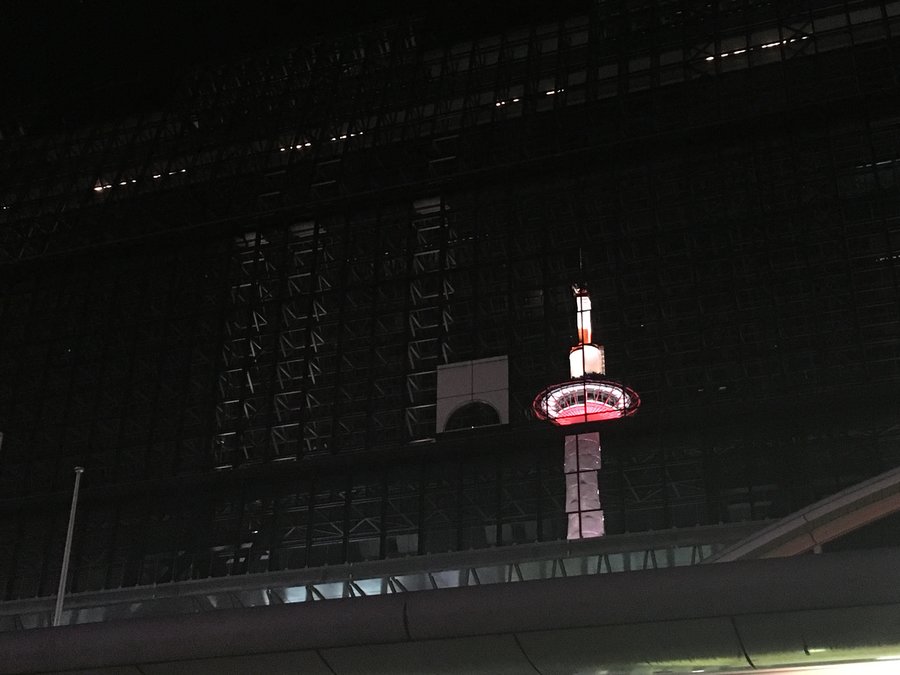
Kyoto tower reflected on Kyoto railway station
Some sights are better accessed by metro or local train by bus; these tend to be the Inari Shrine in the far south east of the city, and the Arashiyama Bamboo Forest in the north east. Both of these are accessible by both bus and train, giving you both options in any case.

Arashiyama bamboo forest
The Kyoto Bus One Day Pass is, in my opinion, unbeatable value, and can open up parts of the city that would cost significantly more to reach by taxi. If you are unsure of where in Kyoto to buy the pass, ask at your hotel reception.
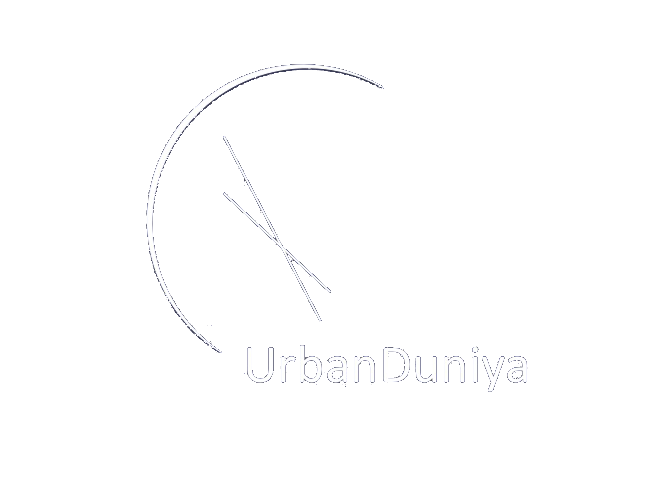



i did use buses I think when I went to Kyoto, although I mostly relied on the metro. either way, public transport in Japan is always amazing!
I didn’t find the metro to be half as useful as the bus, actually! Maybe I’ll look into that more next time… But you’re right, Japan seriously has its public transport sorted!